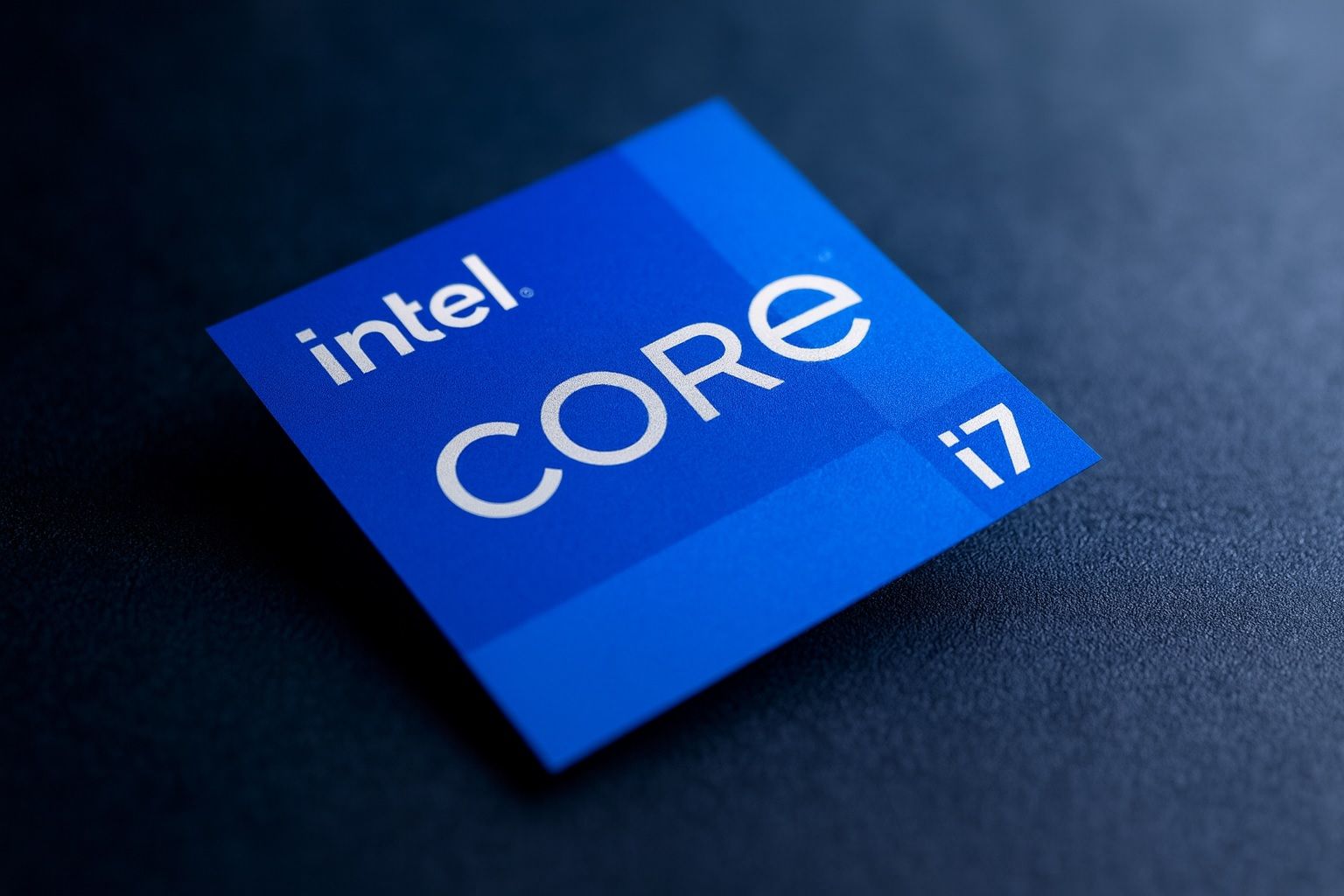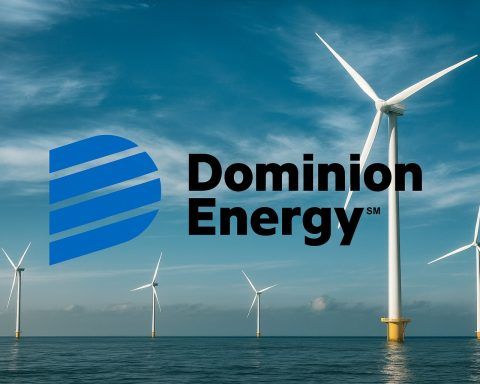- Shares Near 2-Year High: Intel Corporation’s stock (NASDAQ: INTC) is trading around $38 per share as of October 27, 2025 – near its highest level since 2022 [1]. The price spiked after recent earnings and deal news, bringing year-to-date gains to roughly 85–90%, far outpacing the S&P 500 (~6% YTD) and rival chip stocks [2] [3].
- $15 Billion Lifeline: A wave of strategic investments totaling ~$15 billion has fueled Intel’s comeback. In August, the U.S. government took an unprecedented ~10% stake (~$8.9B) in Intel as part of the CHIPS Act onshoring push [4]. Graphics giant Nvidia invested $5 billion for a ~4% stake, and SoftBank’s Vision Fund quietly bought ~$2 billion of Intel shares [5]. This infusion – dubbed a “financial lifeline” – rejuvenated investor confidence and shored up Intel’s balance sheet.
- Q3 Earnings Beat: Intel’s third-quarter 2025 results (reported Oct. 23) handily beat expectations, marking a return to profitability. Revenue came in at $13.7 billion (up ~3% year-over-year) with an adjusted EPS of $0.23 – a huge surprise versus roughly $0.01 anticipated [6]. Gross margins hit ~40% (versus ~35% expected) and the company swung to a GAAP profit (~$4.1B) after a large loss a year ago [7]. CEO Lip-Bu Tan touted “steady progress” in the turnaround, while CFO Dave Zinsner noted they now have the “high-class problem” of demand outstripping supply [8].
- Stock Surge and Sentiment: Intel shares jumped as much as 7–9% following the earnings news, briefly touching an 18-month high around $39 [9] [10]. The 2025 rally – nearly doubling Intel’s market value – has been driven by hype around artificial intelligence (AI) and big bets on Intel’s revival. Even CNBC’s Jim Cramer has praised CEO Tan as a “legendary semiconductor investor” for orchestrating the turnaround deals [11]. However, many Wall Street analysts remain cautious, arguing the stock may have run “too far, too fast” relative to Intel’s current fundamentals [12].
- Analysts’ Diverging Views: The 12-month price targets on Intel average only about $26–$30 per share, ~25% below the current price [13]. Multiple firms recently downgraded the stock (e.g. HSBC to “Reduce,” BofA to “Underperform”) citing execution risks and rich valuation [14]. Bears point out Intel’s forward P/E near 70× – far above peers like Nvidia (~30×) or AMD (~40×) [15] – and insist Intel must prove its technology roadmap to justify the hype. Bulls, on the other hand, highlight Intel’s $15B cash boost and cost-cutting as setting a strong stage for 2026, with a few even forecasting $40+ share prices if the turnaround gains traction [16].
- Tech & Market Context: Intel’s revival comes amid a broader “AI supercycle” lifting the semiconductor industry [17]. Global chip sales are on track for record highs in 2025 thanks to massive investment in AI, 5G, and cloud computing [18]. Competitors have rallied too – e.g. Nvidia hit a $1 trillion market cap and AMD shares are up ~80% YTD [19] [20]. Intel’s stock, however, remains a focal point as an old guard player trying to reinvent itself for the AI era. Investors are watching whether macro tailwinds (like cooling inflation and U.S. tech subsidies) can help Intel sustain its momentum.
Intel’s logo displayed in an illustrative photo. The chipmaker’s stock has rebounded sharply in 2025 on hopes of an AI-fueled turnaround and major government and industry backing. (Reuters [21])
Intel’s share price surge in 2025 marks a stunning reversal of fortune for the legendary chip giant. As of today, INTC trades around $38, roughly double its level at the start of the year [22]. The stock has rallied on a potent mix of headline-grabbing deals, improving finances, and AI market buzz. Below, we break down the latest developments driving Intel’s stock upswing – and whether this momentum can hold.
Stock Price Rally: From Lows to Multi-Year Highs
After languishing in 2022–2023, Intel’s stock mounted an explosive rally this year, recently climbing to about $38–39 per share in late October – the highest in nearly two years [23]. The run-up has added tens of billions to Intel’s market cap and put the shares up almost 90% year-to-date [24]. By comparison, the Philadelphia Semiconductor Index is up around 45% in 2025, and the S&P 500 only ~6% [25].
Such outsized gains seemed unlikely a year ago. Intel suffered its first annual loss in decades in 2024 and even got removed from the Dow Jones Industrial Average (replaced by Nvidia) amid declining PC demand and manufacturing setbacks [26]. But 2025 has brought a dramatic change in narrative. The stock’s upward trajectory began accelerating over the summer and into the fall, fueled by optimism that Intel can reclaim its footing in the AI-focused chip race.
Recent trading: After peaking around $39 in mid-October, INTC shares saw a slight pullback (~10%) into the mid-$30s, but buyers repeatedly stepped in at those levels [27]. Notably, a bullish “golden cross” formed on the stock’s chart in October (with the 50-day moving average crossing above the 200-day) – a classic technical signal of upward momentum [28]. At the same time, some indicators flashed caution: the rally left Intel overbought on measures like the Relative Strength Index (RSI) [29]. This technical backdrop suggests strong upward trend but also the potential for volatility as the stock digests its big gains.
$15 Billion AI Lifeline and Strategic Deals
A key catalyst behind Intel’s resurgence has been a series of unprecedented partnerships and capital injections – essentially a $15 billion vote of confidence from government and industry partners. In late August, the U.S. government converted CHIPS Act subsidies into an equity stake of roughly 9.9% in Intel [30]. This amounted to about $8.9 billion invested in the company – a historic move making Washington a significant shareholder in the nation’s top chip manufacturer. The aim: bolster domestic chip production and help Intel fund its cutting-edge fab roadmap.
Not long after, Nvidia – the world’s leading AI chipmaker – agreed to invest $5 billion for roughly a 4% stake in Intel [31]. The two companies plan to jointly develop new CPU-GPU hybrid chips for AI, signaling a surprising alliance between erstwhile rivals. Around the same time, Masayoshi Son’s SoftBank (via its Vision Fund) quietly bought about $2 billion of Intel stock [32]. In total, about $15 billion in fresh capital has poured into Intel through these deals, dramatically strengthening its balance sheet. “These investments have offered a lifeline to the stock,” as one Reuters analysis noted, enabling over a 90% rally in 2025 [33].
Intel’s management has leaned into these partnerships as validation of its strategy. CEO Lip-Bu Tan – a veteran tech investor who took the helm in March 2025 – described the funding as critical support for Intel’s ambitious plans. With the cash, Intel can accelerate development of new chips and expand its manufacturing capacity at a time when it had been financially strained. The company had also been restructuring, including cutting more than 20% of its workforce and selling off non-core business lines (such as a majority stake in its Altera FPGA unit) to slim down [34]. The infusion from the U.S., Nvidia, and SoftBank effectively “offered a financial cushion” as Intel works to revive growth [35].
Beyond the confirmed deals, rumors of further alliances have swirled, feeding the bullish sentiment. Recent reports suggested even rival AMD might outsource some chip production to Intel’s foundry services – a role reversal that, if true, would be a major win for Intel [36]. There’s also speculation that big cloud players like Microsoft (Azure) could become major chip customers, or that Apple might consider a strategic stake in Intel to secure supply. Meanwhile, Intel has been touting its next-gen products: this month it previewed new “Panther Lake” AI-enhanced PC processors and “Clearwater Forest” server chips optimized for AI workloads [37]. Such headlines have kept Intel in the news as a turnaround story, further buoying investor optimism.
Earnings Comeback: Intel Exceeds Expectations in Q3
Intel’s latest earnings report demonstrated concrete signs of improvement, reinforcing the upbeat narrative. On October 23, 2025, the company announced third-quarter results that trounced Wall Street forecasts and marked a return to profitability after consecutive losses last year.
By the numbers: Q3 revenue was $13.7 billion, slightly growing (~3% YoY) and topping consensus estimates of around $13.1B [38]. More importantly, Intel recorded an adjusted profit of $0.23 per share, blowing past expectations of essentially breakeven earnings [39]. A year ago, Intel had posted a small loss, so this swing back into the black was a relief to investors. The company’s gross profit margins also came in much healthier than anticipated (about 40%, vs ~35–36% expected) [40], helped by cost-cutting and one-time gains (such as the Altera stake sale). On a GAAP basis, Intel reported roughly $4.1 billion in net income for Q3 [41] – a stark improvement from the large loss it incurred in Q3 2024.
These results “beat profit estimates and regain stability”, as Reuters described, and sparked a surge in Intel’s stock price [42]. Shares jumped over 7% in after-hours trading that day and continued rising when markets opened, ultimately hitting new highs for the year.
Management struck a cautiously optimistic tone on the earnings call. CEO Tan said the Q3 progress was “steady” and evidence that Intel’s turnaround plan is gaining traction [43]. Notably, the quarter benefited from booming demand for chips tied to AI: as data center operators roll out advanced AI processors, they are also upgrading their server CPUs (a market Intel dominates) to support those workloads [44] [45]. Intel’s CFO Dave Zinsner highlighted that chip demand is currently outpacing supply, with some customers waiting in line – a “good problem to have.” He jokingly called it a “high-class problem” that Intel hasn’t faced in years [46].
At the same time, executives acknowledged challenges. Zinsner cautioned that Intel’s manufacturing yield on next-gen 18A process chips remains low – and won’t reach “acceptable levels” until 2027 [47]. In other words, Intel’s most cutting-edge chip technology is still a work in progress, which could delay its competitiveness in the highest-end market. The company’s forward guidance for Q4 was also tempered: Intel expects roughly $12.8–13.8B in revenue (midpoint ~$13.3B) and around $0.08 in Q4 EPS [48] [49]. Those figures are in line with analyst forecasts, implying only modest sequential growth. Intel is essentially forecasting a steady continuation of the recovery, rather than a dramatic jump – a sign of both prudence and the lingering headwinds in its business.
Still, the earnings showed that Intel’s aggressive belt-tightening and renewed focus can yield results. The company has slashed annual expenses, with 2025 capital spending now expected to be ~$27 billion (down from far higher under previous plans) [50]. Under CEO Tan, Intel has also shifted strategy to rely more on external partners and funding (as evidenced by the recent deals) rather than going it alone on every project [51]. These moves helped stabilize Intel’s finances sooner than many expected. “Better-than-feared guidance… visible cost and gross margin progress, AI-PC buzz, and $15B of fresh strategic funding” all contributed to the market’s positive reaction, noted Michael Schulman, CIO of Running Point Capital [52].
Market Reaction and Investor Sentiment
The stock market’s response to Intel’s revival has been swift and, at times, euphoric – but it’s not without skeptics. After the Q3 beat, Intel shares soared in heavy trading. On October 24, the day after earnings, the stock jumped as much as 7.8% to an intraday peak of ~$39, marking an 18-month high for the share price [53]. It closed that week with a ~3% gain, capping an astonishing run: Intel’s stock had now rebounded over 90% in 2025, vastly outperforming AI chip darling Nvidia (~55% YTD at the time) and rival AMD (~80% YTD) [54] [55].
This sharp rally has been fueled by growing confidence that Intel is finally on the mend. “Intel has turned a corner and is steadying the ship,” said Ben Bajarin, CEO of analyst firm Creative Strategies, adding that it “feels like a strong setup for 2026.” [56] Bajarin and others have pointed to the combination of Intel’s cost cuts, new product roadmap, and the $15B cash infusion as reasons to believe the company can compete again. Even some former doubters have come around: CNBC’s outspoken host Jim Cramer – who was critical of Intel in the past – lauded CEO Tan as a “legendary” chip investor for pulling off the strategic deals that ignited the stock’s surge [57]. Such commentary from high-profile market watchers further stoked bullish sentiment among retail investors.
However, amid the celebration, many analysts urge caution. The speed of Intel’s share price ascent has in fact prompted several Wall Street firms to downgrade the stock in recent weeks. Bank of America’s semiconductor team, for example, cut its rating to Underperform (sell-equivalent), warning that Intel had “run too far, too fast” without sufficient improvement in its long-term earnings power [58]. HSBC similarly downgraded Intel to a rare “Reduce” rating, citing execution risks and intense competition eroding Intel’s market share [59]. The general concern: while Intel’s news is positive, the stock’s valuation looks stretched relative to the company’s still-recovering fundamentals.
Indeed, at ~$38 a share, Intel trades around 70 times its forward earnings – a lofty multiple in absolute terms [60]. For comparison, Nvidia’s forward P/E is about 30× and AMD’s around 40× [61], even though those companies are growing faster in cutting-edge AI markets. This disconnect has kept many analysts lukewarm on Intel’s stock despite the recent heroics. According to Bloomberg data, the average 12-month price target for INTC sits in the upper-$20s [62] [63]. In other words, Wall Street on average sees the stock falling roughly 25% from current levels over the next year. Only a handful of bullish outliers (e.g. UBS, which has a $40 target) expect further significant upside [64] [65]. The vast majority rate Intel a Hold or Sell at this point.
Investor sentiment, therefore, is somewhat divided. There’s a clear “show me” attitude: optimism about Intel’s potential is high, but confidence that it can fully deliver is still shaky. A notable episode illustrating this came just days before earnings – when reports surfaced that the White House might tighten export restrictions to China for certain tech, which could indirectly hit Intel. Intel’s stock promptly dropped 3.2% on that news on Oct. 22 (to about $36.92) [66], reminding investors that external risks and geopolitics still loom. “We understand the desire to claim victory… but this fight is far from over – perhaps it’s better to call it a draw for now,” analysts at Bernstein wrote, cautioning against premature celebration [67]. That sentiment captures the cautious stance of many veteran chip analysts: Intel’s progress is real, but it still has a lot to prove before the long-term doubters are convinced.
Technical and Fundamental Analysis
From a technical analysis perspective, Intel’s stock momentum has been strong but may be due for a breather. The October rally pushed INTC above key resistance levels and produced a bullish golden cross pattern on its moving averages [68]. Trading volume spiked on news days, indicating heavy accumulation by investors on positive headlines. However, momentum oscillators like RSI reached levels indicating overbought conditions, suggesting the stock was overextended in the short term [69]. True to form, the price has since eased off its peak – a healthy consolidation. Technicians now see support in the mid-$30s (roughly $34–$36), which was the trading range prior to the earnings spike [70]. If Intel’s stock were to fall back into that zone, buyers might step in, whereas a break below ~$34 could signal a deeper correction. On the upside, the recent high near $39 is the first barrier; above that, there’s little obvious resistance until the $45–50 range (levels last seen in 2021). Volatility is expected to remain elevated – options markets had priced in a ~10% swing around the earnings event [71], and sizable swings could continue as traders react to news and rumors in real time.
Looking at fundamentals, Intel’s valuation and financial metrics present a mixed picture. On one hand, the company’s profitability and cash flow have improved markedly from the trough of 2022–2023. The turnaround efforts under CEO Tan – including slashing operating costs by billions, streamlining product lines, and securing external capital – have started to “steady the ship”, as noted earlier [72]. Intel’s Q3 return to profit and its robust gross margin uptick are evidence that the core business (PC and server chips) can still deliver solid earnings when run efficiently. Additionally, Intel’s balance sheet is now fortified by the ~$15 billion in new investments, which provides ample “dry powder” to fund R&D, factory expansions, and potentially weather any economic downturn [73]. This cash cushion reduces the risk of another dividend cut or other distress moves, which is a relief for long-term shareholders.
On the other hand, Intel’s stock now carries a premium valuation that assumes significant future growth which is not yet guaranteed. The forward price-to-earnings ratio above 60×–70× reflects very high earnings expectations in the next year or two [74]. Yet Intel’s own forecast for Q4 and the current consensus for 2025 earnings are still quite modest (Q4 EPS guidance is only $0.08 [75]). The company will need to greatly accelerate its net income in 2024–2025 to grow into the current stock price. This likely requires not just cost cuts, but real revenue growth in new areas – namely, AI accelerators, foundry services, and graphics – where Intel has lagged. It is here that skepticism abounds: Nvidia controls ~90% of the AI processor market and isn’t standing still [76]; AMD, meanwhile, is grabbing server market share and also jumping into AI chips (its stock hit all-time highs around $240 recently) [77]. Intel is playing catch-up in these domains. The company’s bold bets – building out Intel Foundry Services to make chips for others, developing the forthcoming 18A manufacturing node, and launching new GPU and AI chip lineups – all carry execution risk. Setbacks in any of these initiatives could undermine the bullish thesis quickly.
Intel’s own finance chief has been frank about the challenges. He warned that the advanced 18A chip process won’t reach acceptable yield levels until 2027 [78], implying that Intel’s most cutting-edge chips will likely not be cost-competitive for another two years. That gives rivals an opening to extend their lead. Additionally, macroeconomic factors like global PC demand and China trade policy remain wildcards that could impact Intel’s core PC and data center business. All of this explains why many analysts are hesitant to give Intel full credit for a comeback just yet, despite the clearly positive recent strides.
Future Outlook: Cautious Optimism for 2026 and Beyond
Looking ahead, the big question for Intel is whether it can convert this year’s buzz and external support into a sustainable long-term turnaround. On the optimistic side, proponents argue that Intel now has the pieces in place to succeed: a new CEO with a fresh approach, a war chest of funding, and a renewed focus on its engineering strengths. The company’s cost structure is leaner, and its upcoming product roadmap (from Meteor Lake and Arrow Lake PC chips to Emerald Rapids and Sierra Forest server chips, plus new AI accelerators) could help regain technological competitiveness in 2024–2025. Industry demand trends also appear favorable – the proliferation of AI applications is spurring customers to upgrade CPUs (benefiting Intel’s flagship Xeon and Core processor lines) [79], and governments are keen to support domestic chip suppliers. If Intel executes well on delivering new chips and wins a few big foundry customers (a wildcard that could bring in high-margin business making chips for other companies), its earnings could ramp up significantly. Some bulls, like analysts at UBS, believe Intel’s stock could climb into the $40s in the next year or two if, for example, it secures major foundry deals or outperforms on AI server chip sales [80]. Creative Strategies’ Bajarin has noted that with the cost reductions and cash infusion, Intel’s setup is “strong for 2026”, implying the company might truly hit its stride by then [81].
On the cautious side, pessimists stress that Intel’s comeback is far from guaranteed. The company has faltered in previous attempts to catch up (e.g. struggling with 7nm delays under the prior CEO), and it faces agile competitors. To justify its current stock price – let alone sustain further gains – Intel will need to show tangible progress on its technology milestones over the next few quarters. That includes rolling out its new 18A process chips on schedule, successfully ramping its foundry business (which will put it in direct competition with industry leader TSMC), and demonstrating that its AI-oriented products can gain traction in a market dominated by Nvidia. Bears also point out that Intel’s recent stock surge has been “deal-driven” [82]; the rally owes much to one-off external boosts rather than organic performance. Once the excitement from the U.S./Nvidia investments and the surprise profit wears off, Intel will be judged by the hard numbers – revenue growth, market share, and margin expansion. If those remain underwhelming, the stock could stall or pull back. The current consensus price target near $28 reflects this tempered outlook, essentially suggesting that Intel may have overrun its fundamentals in the short term [83].
For investors, the coming months will bring important clues. Intel’s execution on its Q4 guidance and its commentary on 2026 goals will be closely scrutinized. Any new partnerships or government policies (for instance, additional subsidies or customer wins) could provide further upside surprises. Conversely, any stumble – such as product delays or softer demand – could validate the skeptics. It’s worth noting that the broader market environment will also play a role: the semiconductor sector is somewhat at the mercy of macroeconomic shifts and AI investment cycles. At present, market conditions are supportive (tech stocks have been buoyed by easing inflation and hopes of Federal Reserve rate cuts [84]), but sentiment can shift quickly.
Bottom line: Intel’s stock has staged a remarkable rally in 2025, fueled by genuine improvements and bold external backing. The company is no longer in crisis mode; it’s back to playing offense in an industry where it once led. Yet, the true test lies ahead – Intel must translate hype into sustained revenue and profit growth to keep investors on board. “A bet on Intel isn’t about what just happened, it’s about the possibilities for the future,” as one fund manager observed [85]. For now, Intel’s dramatic rebound – driven by AI excitement and unusual outside support – has made INTC one of this year’s most talked-about tech stocks [86]. Whether the company can turn this momentum into lasting success is the challenge looming over the next year, making Intel’s journey a must-watch storyline for 2026.
Sources: Official financial news and analysis as of late October 2025, including reports from TechStock² (ts2.tech), Reuters, Bloomberg, CNBC, and other market experts [87]. All stock data and performance figures are current as of Oct. 27, 2025.
References
1. ts2.tech, 2. ts2.tech, 3. www.reuters.com, 4. ts2.tech, 5. ts2.tech, 6. ts2.tech, 7. ts2.tech, 8. ts2.tech, 9. www.reuters.com, 10. english.aawsat.com, 11. ts2.tech, 12. ts2.tech, 13. ts2.tech, 14. ts2.tech, 15. ts2.tech, 16. ts2.tech, 17. ts2.tech, 18. ts2.tech, 19. ts2.tech, 20. ts2.tech, 21. english.aawsat.com, 22. ts2.tech, 23. ts2.tech, 24. ts2.tech, 25. ts2.tech, 26. www.advisorperspectives.com, 27. ts2.tech, 28. ts2.tech, 29. ts2.tech, 30. ts2.tech, 31. ts2.tech, 32. ts2.tech, 33. ts2.tech, 34. english.aawsat.com, 35. english.aawsat.com, 36. ts2.tech, 37. ts2.tech, 38. ts2.tech, 39. ts2.tech, 40. ts2.tech, 41. ts2.tech, 42. www.reuters.com, 43. ts2.tech, 44. www.reuters.com, 45. www.reuters.com, 46. ts2.tech, 47. english.aawsat.com, 48. ts2.tech, 49. www.reuters.com, 50. www.reuters.com, 51. www.reuters.com, 52. www.reuters.com, 53. www.reuters.com, 54. www.reuters.com, 55. english.aawsat.com, 56. english.aawsat.com, 57. ts2.tech, 58. ts2.tech, 59. ts2.tech, 60. ts2.tech, 61. ts2.tech, 62. www.advisorperspectives.com, 63. ts2.tech, 64. ts2.tech, 65. ts2.tech, 66. www.advisorperspectives.com, 67. english.aawsat.com, 68. ts2.tech, 69. ts2.tech, 70. ts2.tech, 71. ts2.tech, 72. english.aawsat.com, 73. ts2.tech, 74. ts2.tech, 75. ts2.tech, 76. ts2.tech, 77. ts2.tech, 78. english.aawsat.com, 79. www.reuters.com, 80. ts2.tech, 81. ts2.tech, 82. ts2.tech, 83. ts2.tech, 84. ts2.tech, 85. www.advisorperspectives.com, 86. ts2.tech, 87. ts2.tech





